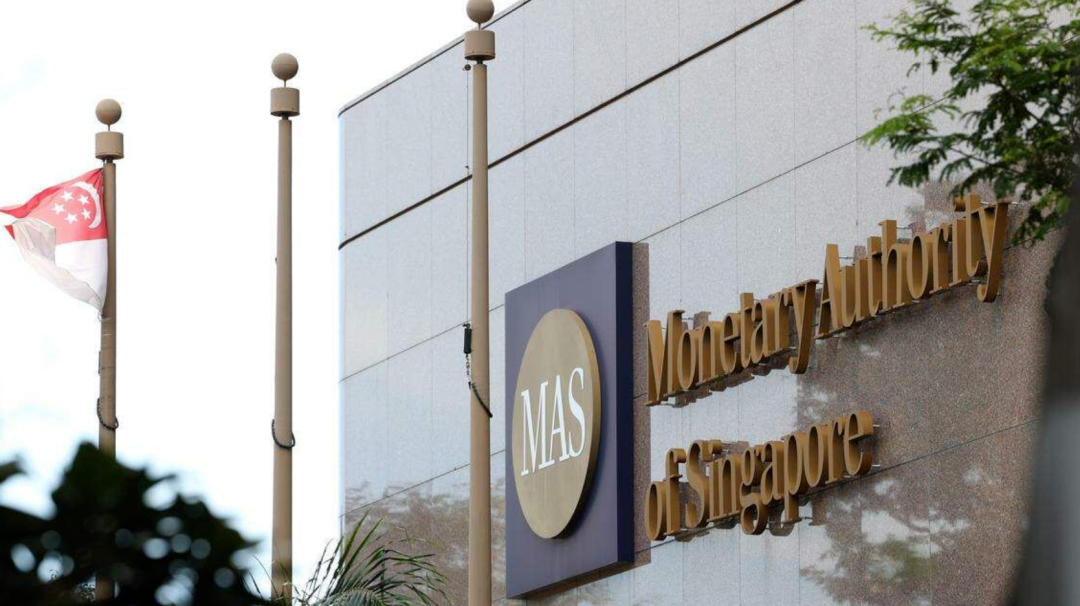Author: Liang Yu
Editor: Zhao Yidan
In September 2025, a message from the UK Treasury's official website drew global attention as the United States and the United Kingdom announced the establishment of the "Transatlantic Future Markets Working Group," aimed at coordinating the regulatory framework for digital assets. This initiative marks a shift from fragmented governance to collaborative governance among major global financial centers.
At the same time, there are views in the market suggesting that mainland regulatory authorities may keep a close eye on the RWA (Real World Asset) tokenization business of brokerages in Hong Kong to prevent potential risks. According to the Australian Financial Review, the Australian Transaction Reports and Analysis Centre has ordered Binance Australia to undergo an anti-money laundering audit.
These developments collectively outline the current global focus on cryptocurrency asset regulation: major economies are accelerating regulatory coordination while maintaining caution towards innovative businesses.
I. Global Regulatory Landscape: From Fragmentation to Strategic Coordination
According to the Bank for International Settlements (BIS) 2024 annual report, combined with market data from CoinMarketCap, the global cryptocurrency market continued to grow from 2024 to early 2025, with a total market capitalization surpassing $2.5 trillion and an expanding user base. Cryptocurrency assets have moved from the margins to the mainstream, and their potential impact on financial stability has compelled regulators to act more swiftly.
The Financial Stability Board (FSB) released an international regulatory framework for cryptocurrency assets in July 2023, proposing the principle of "same business, same risks, same regulation." This principle is becoming the cornerstone of global regulatory coordination.
(A) Formation of Major Global Regulatory Models
1. United States: Three Key Acts and Institutional Output
The U.S. regulatory framework is characterized by a combination of legislation and institutional enforcement. Three key acts form a comprehensive regulatory structure:
The GENIUS Act: Establishes rules for the issuance and management of stablecoins, restricts the payment of interest or returns, and emphasizes the roles of banks and qualified custodians.
The CLARITY Act: Addresses the definition of security tokens versus commodity tokens, providing legal clarity on the regulatory boundaries between the SEC and CFTC.
The Anti-CBDC Surveillance National Act: Prohibits the Federal Reserve from issuing retail-level central bank digital currency, protecting personal privacy and preventing excessive government surveillance.
The SEC is responsible for the regulation of security tokens and exchanges, while the CFTC oversees commodity tokens and derivatives, creating a complementary division of labor. The overall logic is: payment tools—market structure—monetary sovereignty in a three-dimensional parallel, constructing a "triangular" regulatory framework for the U.S. regarding cryptocurrency and RWA.
2. European Union: Systematic Regulation and MiCA
The EU's Markets in Crypto-Assets Regulation (MiCA) will officially apply from December 2024, establishing a comprehensive management framework covering issuers and service providers. MiCA achieves full-chain regulation from issuance to trading through refined classification of three types of tokens. The EU is shifting from a technology-neutral principle to a risk-based regulatory model, striving for a dynamic balance between financial innovation and security.
3. Middle East: UAE as a Leading Experimental Financial Hub
In the Middle East, the core feature of cryptocurrency asset regulation is the "proactive embrace and precise legislation" model led by the UAE (especially Dubai). To reduce oil dependency and seize the global digital asset high ground, the UAE has built a multi-layered cutting-edge regulatory framework, marked by the establishment of the Virtual Assets Regulatory Authority (VARA) in Dubai, implementing laws specifically for virtual assets.
The core of this model lies in precisely balancing "innovation-friendly" and "risk prevention": on one hand, attracting top global enterprises and capital through licensing and clear rules; on the other hand, strictly adhering to OECD standards, joining the Cryptocurrency Transparency Framework (CARF), and cracking down on unlicensed operations. The UAE's practices not only provide a paradigm for regional countries like Saudi Arabia and Bahrain but also clearly convey the Middle East's strategic ambition to transform from an "energy center" to a "digital asset hub."

(B) Regulatory Paths of Asian Countries and Regions
Asia exhibits a complex and diverse ecosystem in cryptocurrency asset regulation, with each market's institutional arrangements deeply influenced by its financial strategic positioning, risk preferences, and international competitive landscape.
1. China's Choice: From Defense to Strategic Participation
China's strict control over cryptocurrency trading has effectively maintained financial stability at certain stages. However, in the current context where major global jurisdictions are actively laying out next-generation digital financial rules, a purely defensive strategy may mean relinquishing future discourse power.
Under the "one country, two systems" framework, Hong Kong is actively exploring virtual asset licensing management. The Hong Kong Securities and Futures Commission requires virtual asset trading platforms to obtain relevant licenses for compliant operations and is exploring cooperation possibilities in regulatory sandboxes with financial centers like Singapore and Dubai. The Hong Kong SFC has established a licensing system for Virtual Asset Service Providers (VASP), requiring all retail-facing trading platforms to be compliant and licensed. By 2025, several local and international institutions have been approved to enter the regulatory sandbox, including some RWA tokenization pilot projects. The Hong Kong Monetary Authority is advancing the "Ensemble" project, exploring cross-border settlement mechanisms for tokenized assets like bonds and funds, and maintaining active dialogue with markets like Singapore and Dubai. This positions Hong Kong as an important window for China to participate in the global rule-making game under the "one country, two systems" framework.
Although the mainland prohibits cryptocurrency trading, it has not halted the application of blockchain technology. Meanwhile, the China Securities Regulatory Commission's focus for 2025 clearly points to "strengthening regulation in key areas of the capital market, maintaining stable and healthy market development, and effectively protecting the legitimate rights and interests of small and medium investors," reflecting a regulatory approach of cautiously advancing and solidifying institutional foundations at this stage.
2. Singapore: From Sandbox to Inclusive Tokenization Pioneer
The Monetary Authority of Singapore (MAS) is continuously promoting institutional tokenization pilots through "Project Guardian." In September 2025, MAS allowed REITs to trade directly on-chain and lowered the retail investment threshold from 5,000 SGD to 10 USD, seen as a disruptive breakthrough. The core logic of the regulators is to use the sandbox mechanism to allow innovation to grow within a controllable range, gradually pushing it towards an inclusive market.

3. Japan: Regulatory Reclassification of Financial Assetization
The Financial Services Agency (FSA) of Japan is evaluating the redefinition of cryptocurrency assets from "payment tools" to "financial assets," a shift that may mean stricter inclusion of cryptocurrency assets into the financial legal system in the future. Major financial groups in Japan, such as Mitsubishi UFJ Trust Bank, have begun to lay out plans in the stablecoin and tokenized bond sectors. Japan's regulatory path is characterized by "cautious yet forward-looking" efforts to find a balance between protecting investors and promoting financial innovation.
4. South Korea: Formation of Legal Framework and Investor Protection
South Korea officially implemented the Virtual Asset User Protection Act in early 2025, clarifying capital requirements for exchanges, cold wallet storage ratios, and compensation responsibilities. Meanwhile, the Financial Services Commission (FSC) is studying the application scenarios for RWA tokenization, with some institutions applying for pilot tokenized bonds. The regulatory tone in South Korea is "risk prevention first," while also encouraging local conglomerates and international platforms to promote product innovation under compliance.
5. Thailand: Tax Incentives and Tokenized Bond Pilots
The Thai Ministry of Finance and the central bank have continued to provide tax reductions for compliant cryptocurrency trading from 2024 to 2025, aiming to attract more compliant platforms. The Thai Securities and Exchange Commission (SEC) has also approved the first batch of pilot tokenized products based on real estate and bonds, giving Thailand a first-mover advantage in the Southeast Asian competitive landscape.
6. Vietnam: From Cautious Observation to Institutional Exploration
Vietnam currently still prohibits cryptocurrency as a payment tool, but the central bank and the Ministry of Science and Technology have established a "Digital Finance Research Working Group" in 2025 to assess the feasibility of tokenized bonds and on-chain national budgeting. The Vietnam Securities Commission (SSC) is discussing the regulatory sandbox system, and some local tech companies have begun RWA-related testing collaborations with the government. With a large pool of blockchain developers, policy direction will directly impact Vietnam's competitive position in Southeast Asia.
7. Other Southeast Asian Markets: Policy Pilots and Multiple Breakthroughs
The Philippines is promoting a national budget on-chain bill, which, if implemented, would become the world's first RWA government budget management case. The Bank of Indonesia is advancing the "Digital Rupiah" plan and implementing strict licensing management for cryptocurrency exchanges. The diverse explorations of different countries make Southeast Asia one of the most vibrant regulatory testing grounds globally.
II. Structural Challenges: Regulatory Dilemmas of DeFi and RWA
The fundamental challenges facing current regulation stem from the structural conflict between traditional frameworks and the core forms of the cryptocurrency world.
(A) The "Ownerless" Dilemma of DeFi
Regulation relies on identifiable legal entities (such as banks and brokerages), while true DeFi protocols are driven by code and community governance, often existing in the form of DAOs, making them "ownerless." As early as 2023, the U.S. Commodity Futures Trading Commission (CFTC) filed a lawsuit against the decentralized autonomous organization Ooki DAO and won, successfully recognizing a DAO without a clear legal entity as an "unincorporated association" and holding it legally accountable.
(B) Legal Bridges and Compliance Costs of RWA
The core of RWA tokenization (such as real estate and bonds) is not a technical issue but a legal one. How to ensure that on-chain tokens represent immutable off-chain legal rights? This requires building complex "legal bridges," often involving special purpose vehicles (SPVs), trusted custodians, and clear legal agreements.
Taking BlackRock's BUIDL fund as an example, its success hinges on constructing a compliance structure fully aligned with U.S. securities law. High compliance costs mean that RWA is currently still primarily aimed at institutions, and achieving inclusive finance faces significant obstacles. There are also views in the market that regulatory authorities maintain a high level of scrutiny over such cross-border innovative businesses.
III. New Trends in Cross-Border Regulatory Cooperation
The cross-border nature of cryptocurrency assets makes it difficult for a single jurisdiction's regulation to cover all risks. In 2025, cross-border regulatory cooperation is gradually moving from fragmented exploration to systematic construction.
(A) U.S.-UK "Bilateral Coordination": Transatlantic Future Markets Working Group
In September 2025, the U.S. and UK Treasuries announced the establishment of the "Transatlantic Future Markets Working Group," aimed at promoting interoperability of regulatory frameworks. Specific tasks include establishing cross-border information-sharing mechanisms, exploring cross-border compliance paths for stablecoins and RWAs, and unifying anti-money laundering and sanctions standards. This mechanism is interpreted as an attempt by the U.S. and UK to form a "rules output" dual core in global digital financial governance.

(B) Institutional Exploration of Regional Alliances
The EU has achieved unified rules for 27 countries through MiCA and is exploring mutual recognition mechanisms with Switzerland and the UK. In Asia, multi-layered cooperation is emerging:
ASEAN has included "cross-border payments and digital asset compliance" as an official agenda item at the 2025 meeting of finance ministers and central bank governors, aiming to promote minimum regulatory standards within the region.
The Middle East is promoting a digital asset coordination mechanism within the Gulf Cooperation Council (GCC) based on regulatory dialogues led by the UAE and Saudi Arabia.
(C) Multilateral Coordination of International Organizations
The Financial Stability Board (FSB) and the International Organization of Securities Commissions (IOSCO) continue to promote global unified regulatory principles. The Bank for International Settlements (BIS) leads multinational central bank cooperation through innovation hubs, with the mBridge project being particularly notable. Participants include the central banks of mainland China, Hong Kong, Thailand, and the UAE, focusing on exploring the settlement interoperability of cross-border wholesale CBDCs and tokenized assets.
(D) Technology-Driven Cross-Border Compliance
It is noteworthy that cross-border regulatory cooperation is not only limited to institutional levels but is also gradually moving towards technological solutions. For example, some international auditing and compliance organizations are developing blockchain-based real-time transaction monitoring systems to meet compliance reporting requirements across different jurisdictions. This type of "technological compliance" is expected to become a key lever for future cross-border cooperation.
IV. Future Outlook: Key Window Period 2025-2026
The next few years will be a critical window period for the formation of global cryptocurrency asset regulation. With the recommendations from the U.S.-UK working group and the comprehensive implementation of the EU's MiCA, the standards for global cryptocurrency regulation will gradually become clearer.
Regulatory agencies will face ongoing challenges: how to prevent risks without stifling innovation? Flexible regulatory tools such as regulatory sandboxes will see broader application. The Monetary Authority of Singapore's initiatives like "Project Guardian" provide a safe space for innovation, representing an attempt to balance both aspects.
Global cryptocurrency regulation is transitioning from fragmented responses to systematic planning. The decisions made by regulatory agencies between 2025 and 2026 will profoundly impact the fundamental rules of future digital finance.
The Bank for International Settlements report indicates that jurisdictions capable of finding a balance between risk prevention and innovation incentives will occupy advantageous positions in the new round of digital financial competition. Cryptocurrency asset regulation has become an important issue in the competition for financial sovereignty among countries in the digital age.
免责声明:本文章仅代表作者个人观点,不代表本平台的立场和观点。本文章仅供信息分享,不构成对任何人的任何投资建议。用户与作者之间的任何争议,与本平台无关。如网页中刊载的文章或图片涉及侵权,请提供相关的权利证明和身份证明发送邮件到support@aicoin.com,本平台相关工作人员将会进行核查。




